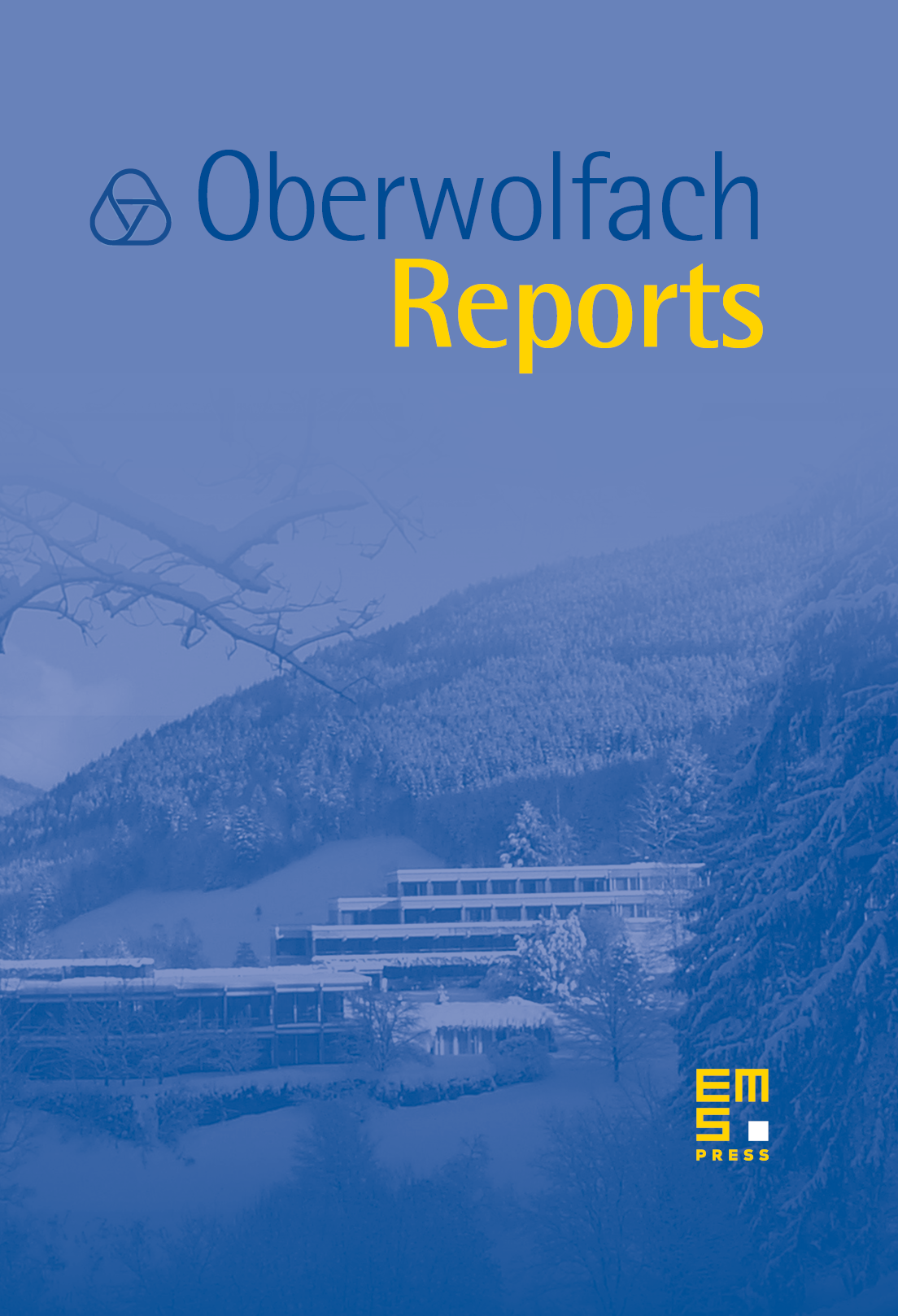Nonlinear Evolution Problems
Klaus Ecker
Freie Universität Berlin, GermanyJalal Shatah
New York University, USAMichael Struwe
ETH Zürich, Switzerland

Abstract
The workshop ‘Nonlinear Evolution Problems’ focussed on three types of nonlinear evolution equations:
(1) Geometric evolution equations (essentially of parabolic type)
(2) Nonlinear hyperbolic equations
(3) Dispersive equations
The programme consisted of 22 talks presented by international specialists from Australia, France, Germany, Italy, Sweden, Switzerland and the United States.Generally, three lectures were delivered in the morning sessions and two in the late afternoon which left ample time for individual discussions.
In the first group of equations, in particular the Ricci flow and conformal flows such as the Yamabe flow and the Q-curvature flow were considered. A further focus was on curvature flows for hypersurfaces such as the Gauss and harmonic mean curvature flow and on geometric flows of higher order. Julie Clutterbuck presented a direct approach to certain fundamental estimates for a general class of parabolic equations. Mete Soner pointed out important relations between fully nonlinear parabolic equations and backward stochastic differential equations.
The class of hyperbolic equations was represented by wave maps, Einstein's equations of gravitation and nonlinear wave equations in waveguides and cones. Among the dispersive equations the nonlinear Schroedinger equation and the KdV equation were considered.
The individual discussions covered connections between approaches to the different equations in each group but also on common techniques used across the three classes of equations. Among such techniques are for instance the careful examination of the algebraic and geometric structure of the nonlinear terms. Another common theme appears to be the phenomenon of blow-up (singularity formation) for solutions and methods to describe the solution near these. Selfsimilar solutions and blow-up rates play an important role here.
The organizers decided to particularly encourage the young researchers among theparticipants to present their work, including a PhD student and several recent post-doctoral fellows.
Cite this article
Klaus Ecker, Jalal Shatah, Michael Struwe, Nonlinear Evolution Problems. Oberwolfach Rep. 2 (2005), no. 2, pp. 1371–1430
DOI 10.4171/OWR/2005/25